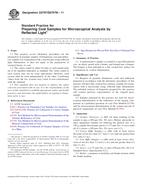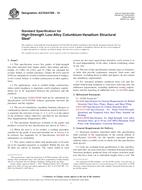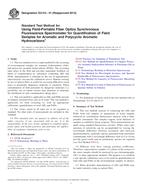1.1 This test method covers procedures for the determination of acidic constituents in petroleum products and lubricants soluble or nearly soluble in mixtures of toluene and propan-2-ol (Note 1). It is applicable for the determination of acids whose dissociation constants in water are larger than 10-9; extremely weak acids whose dissociation constants are smaller than 10-9 do not interfere. Salts react if their hydrolysis constants are larger than 10-9.
Note 1 – In new and used oils, the constituents that may be considered to have acidic characteristics include organic and inorganic acids, esters, phenolic compounds, lactones, resins, salts of heavy metals, salts of ammonia and other weak bases, acid salts of polybasic acids, and addition agents such as inhibitors and detergents.
1.2 The test method may be used to indicate relative changes that occur in an oil during use under oxidizing conditions regardless of the color or other properties of the resulting oil. Although the titration is made under definite equilibrium conditions, the test method is not intended to measure an absolute acidic property that can be used to predict performance of an oil under service conditions. No general relationship between bearing corrosion and acid number is known.
Note 2 – The acid number obtained by this standard may or may not be numerically the same as that obtained in accordance with Test Methods D974 and D3339.
1.3 The values stated in acceptable SI units are to be regarded as the standard.
1.4 This standard does not purport to address all of the safety concerns, if any, associated with its use. It is the responsibility of the user of this standard to establish appropriate safety and health practices and determine the applicability of regulatory limitations prior to use.
Product Details
- Published:
- 01/01/1995
- Number of Pages:
- 7
- File Size:
- 1 file , 54 KB


